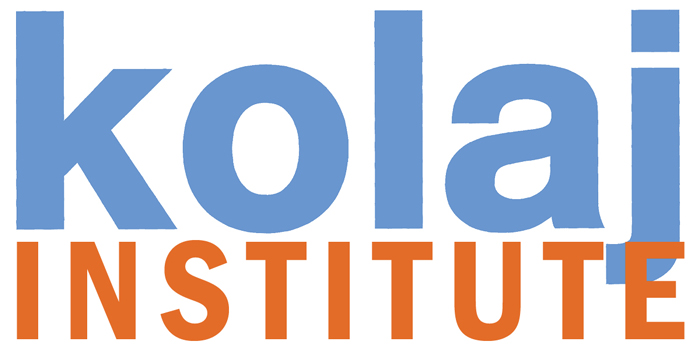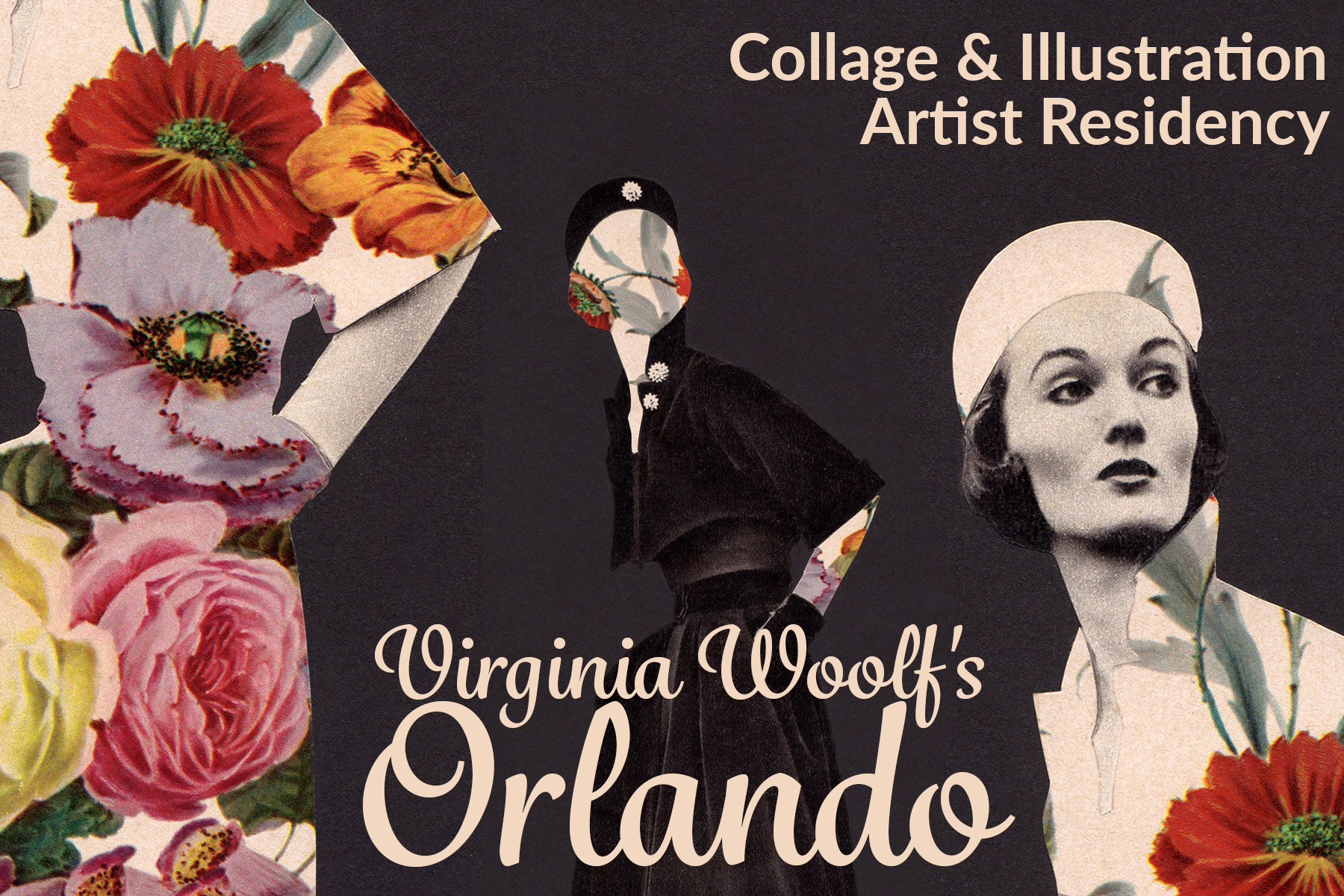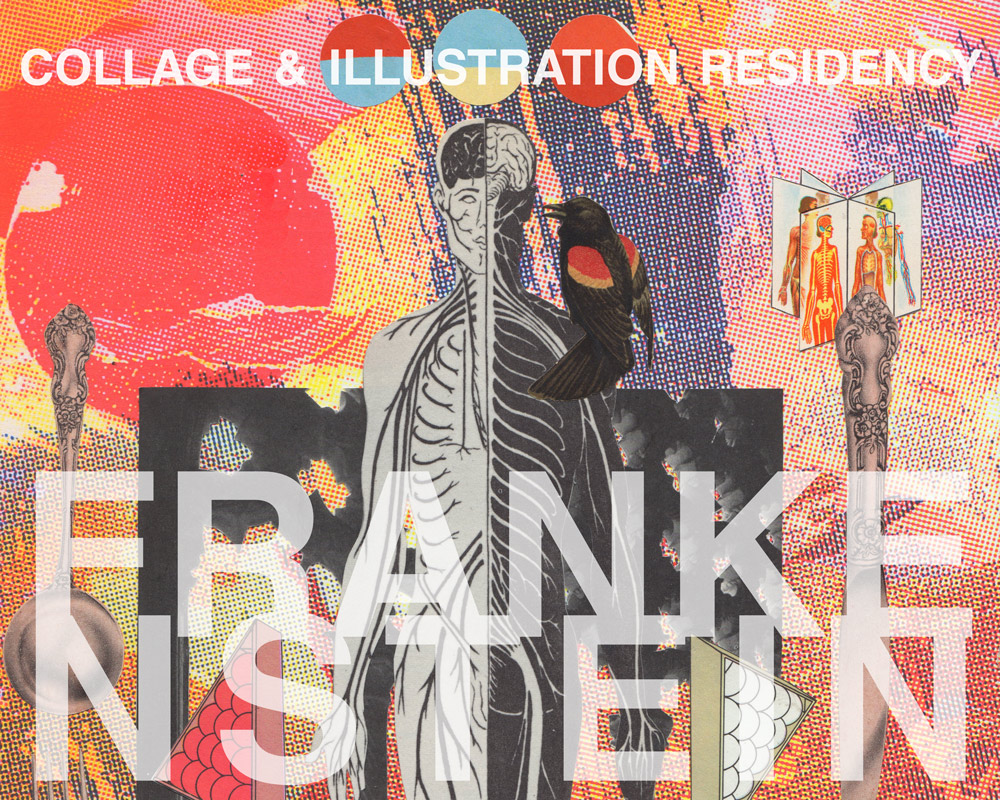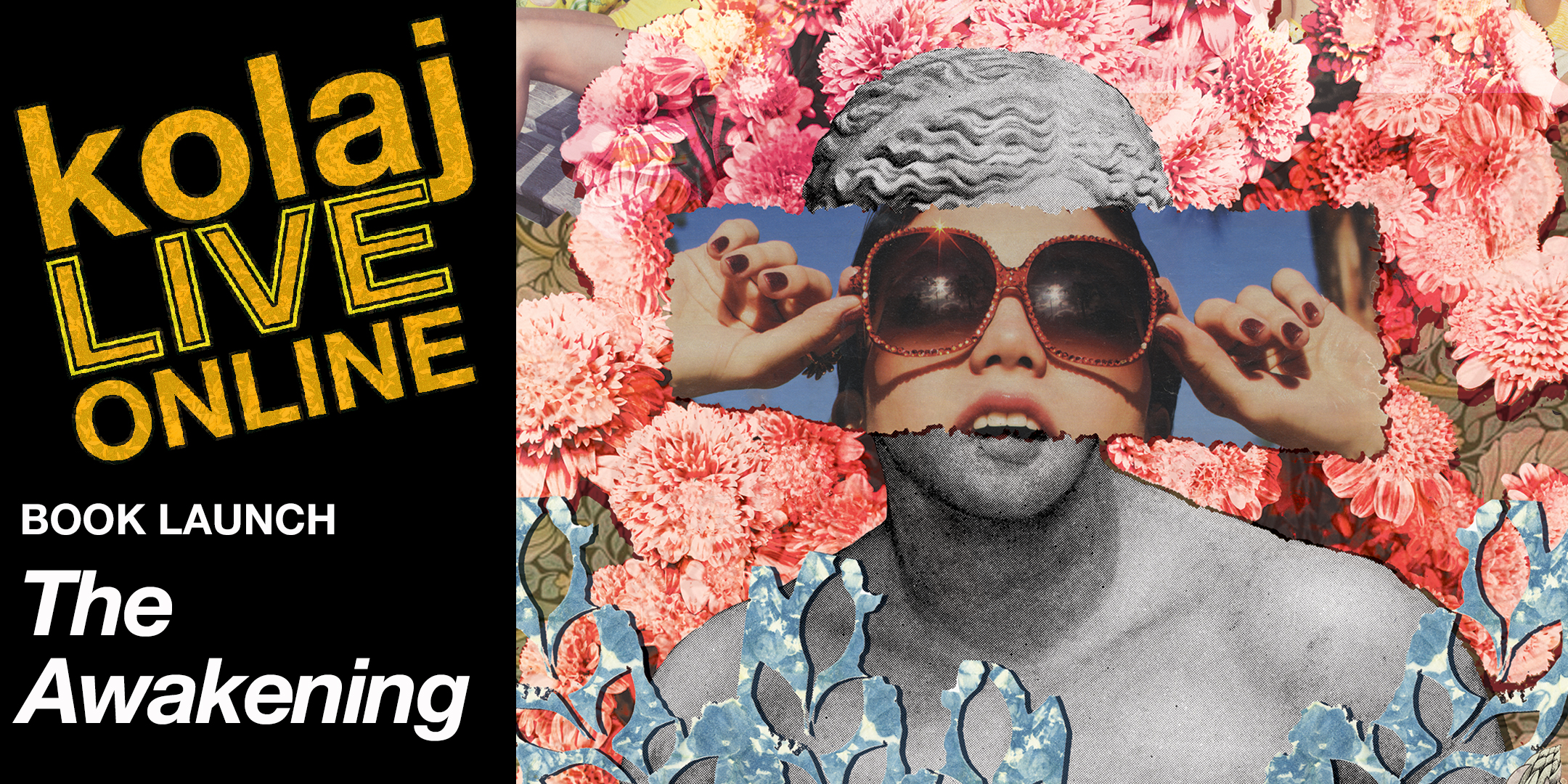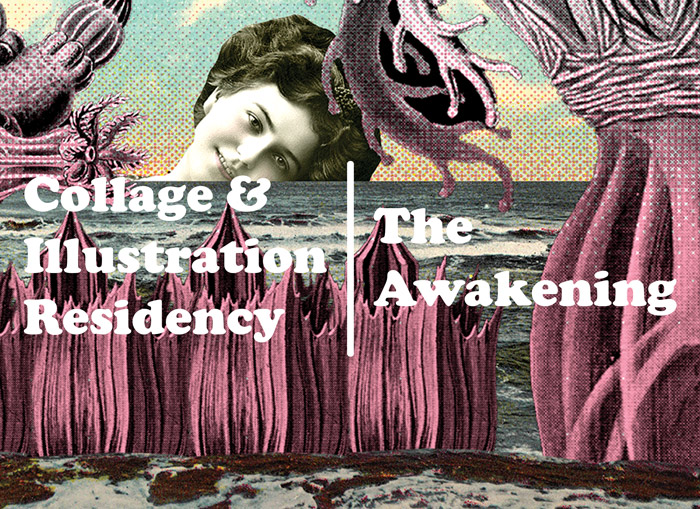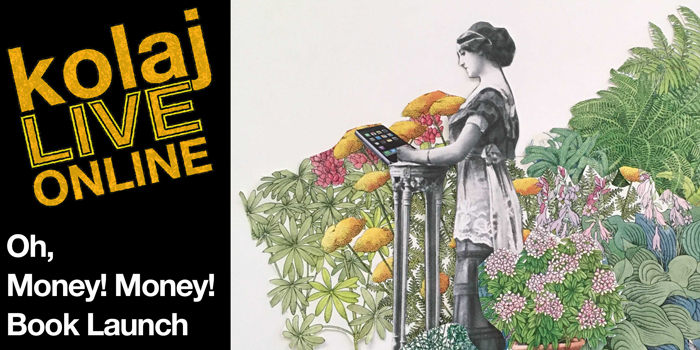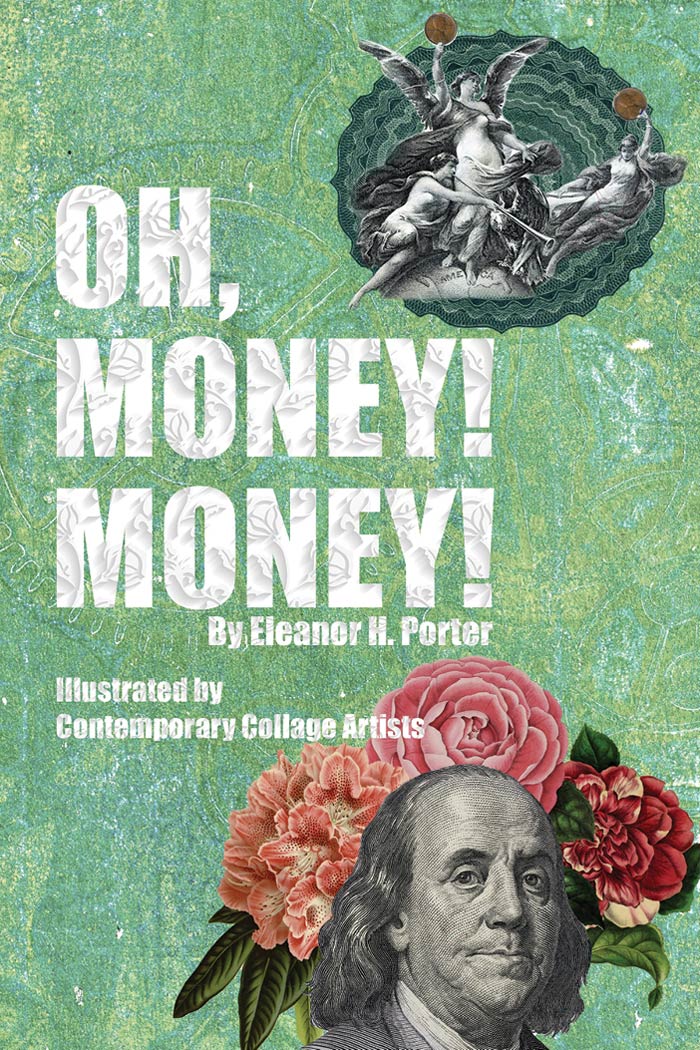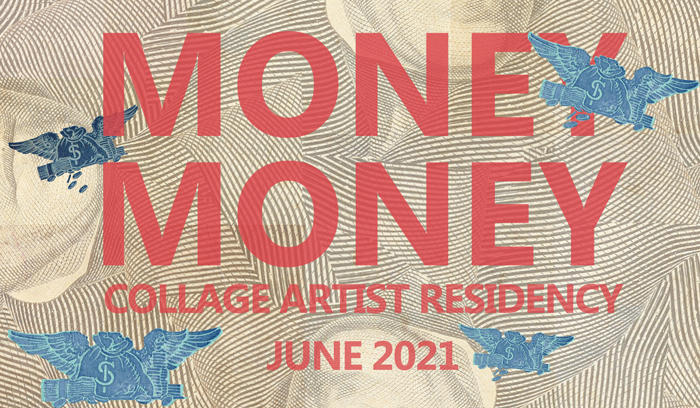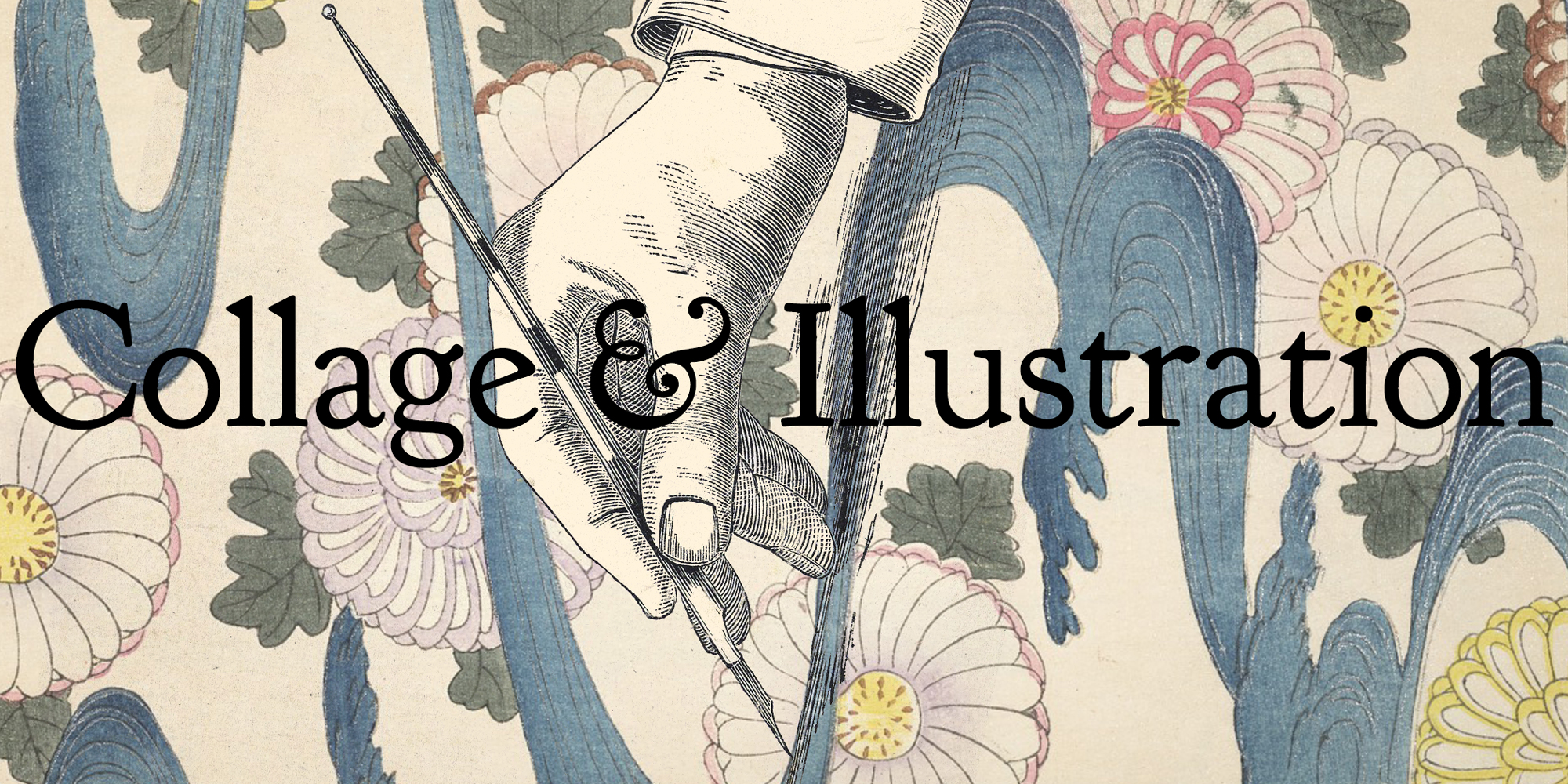
Collage & Illustration is a series of residencies, publications, discussions, and exhibitions that takes vintage, public domain stories and recontextualizes them for a 21st century audience with collaborative collage illustrations.
PROJECT OVERVIEW
Throughout history, people have been making illustrations from early cave paintings to today’s digital designs. Ancient civilizations carved their mythology onto ceremonial vessels and in the Middle Ages, illustrated stories were depicted in illuminated manuscripts. Renaissance artists brought new forms of music, literature, art, and publications in the 14th century, which were widely available due to Johannes Gutenberg’s mechanical printing process in 1452. Woodcuts and engraved prints made art accessible to wider audiences, bringing beauty, ideas, and entertainment to the masses. Printing technology improved rapidly during the Industrial Revolution, leading to more widespread use of illustrations.
There are differences between a reader, an artist, and an illustrator. One major difference between artists and illustrators is their audience and purpose. Artists create works that can stand alone as objects, while illustrators create works that complement and interact with text, enhancing the reader’s literary experience.
Kolaj Institute engages in these projects and publishes these books because we feel that collage can help us make sense of these vintage texts for a 21st-century world. Collage artists are good at unpacking ideas and creating real-world anchors that allow viewers to access those ideas. We want to put these books out in the world in a way that gets people thinking about those ideas differently. By intervening with collage, we want to draw the reader’s attention to all the different themes that might reside in a book.
Current Activities
RESIDENCY
Collage & Illustration Residency – Orlando: A Biography
February 2024
Orlando: A Biography narrates the extraordinary life of the titular character, who experiences centuries of existence, transitioning from male to female along the way. As Nancy Bernardo writes, “Orlando is a unique book that crosses the boundaries of gender roles and relationships, paralleling Woolf’s own complex feelings of heterosexual conformity, her role as a wife, and her affair with Vita Sackville-West.” Woolf’s exploration of gender, time, and self-discovery creates a world and a character that is truly “transhistorical, transsexual, translinear, and transient.”
Eleven artists will embark on a creative exploration of Virginia Woolf’s 1928 groundbreaking work, examining themes of identity, transformation, and the fluidity of time. The resulting illustrations will be published alongside Orlando: A Biography, allowing artists to bring a fresh, contemporary perspective to this timeless narrative. LEARN MORE
BOOK
The Awakening
Set in New Orleans, Kate Chopin’s 1899 novel, The Awakening, touches on 19th century feminism, identity, and societal themes
The Awakening focuses on Edna Pontellier, an upper-class New Orleans woman, torn between expectations and desires. In the beginning of the novel Edna appears to live in a semi-conscious state, trapped in the mundane aspects of her life. As the story evolves, she encounters new people and experiences that create an awakening shift within her. Edna begins to view her world differently, and through this lens new relationships emerge while others become strained. In the end, Edna realizes that even if she has her own desires she is still trapped by her societal role.
Under the art direction and creative leadership of Nancy Bernardo and Christopher Kurts, a dozen international collage artists collaborated to illustrate the book. Working as a group, the artists analyzed the story, discussed themes, uncovered symbols, and asked questions to visually interpret this seminal feminist text for a 21st century audience.
Artist Illustrators
José Sampaio (São Paulo, Brazil) | Leslie Bellavance (Ada, Michigan, USA) | Dimas Melfi (Catamarca, Argentina) | Elizabeth Castaldo (Peekskill, New York, USA) | Caroline Rochon-Gruselle (Montreal, Quebec, Canada) | Isabella Madeira (Rome, New York, USA) | Rebecca Aloisio (Victor, New York, USA) | Dominique Elliot (Ellabell, Georgia, USA) | Mercedes Cueto (Sudbury, Ontario, Canada) | Rosemary Rae (El Cajon, California, USA) | Anne Sutherlin (Denver, Colorado, USA) | Grace Kominsky (Rochester, New York, USA) | Lesley Finn (Guilford, Connecticut, USA) | Jennifer Price (Macon, Georgia, USA)
Past Activities
RESIDENCY
Collage & Illustration Residency – Frankenstein
August 2023
Frankenstein is a widely recognized horror novel in Western literature that narrates the story of a young scientist who becomes obsessed with uncovering the secret to creating life. However, he soon realizes that his aspiration of “playing God” comes with severe repercussions. Throughout the story, the author delves into various human flaws such as grief, pride, an insatiable thirst for knowledge, secrecy, and shame. The protagonist, Victor Frankenstein, must confront the aftermath of bringing unnatural life into the world, leading to tragic events that jeopardize everything he values. LEARN MORE
KOLAJ LIVE ONLINE
The Awakening Book Launch
July 2023
At this Kolaj LIVE Online event, we heard from the project’s creative directors Nancy Bernardo and Christopher Kurts, and five of the contributing collage artists–Dimas Melfi (Catamarca, Argentina), Mercedes Cueto (Sudbury, Ontario, Canada), Caroline Rochon-Gruselle (Montreal, Quebec, Canada), José Sampaio (São Paulo, Brazil), and Lesley Finn (Guilford, Connecticut, USA)–about their experience illustrating Kate Chopin’s 1899 novel. LEARN MORE | WATCH HERE
RESIDENCY
Collage & Illustration Residency – The Awakening
October 2022
The Awakening touches on 19th century feminist, identity, and societal themes that are still relevant today, such as; What does it mean to be a woman? What are the expectations that society puts upon women? Are we bound to what we are born into? What does it mean to transform? What does patriarchy look like in 2022? During this project-driven residency, artists collectively produced a series of collages that illustrate Kate Chopin’s 1899 novel, The Awakening. As a group, artists analyzed the story, discussed themes, uncovered symbols, asked questions, and visually interpreted the text for a 21st century audience. LEARN MORE
KOLAJ LIVE ONLINE
Oh, Money! Money! Book Launch
August 2021
Several artists who took part in the Money Money Collage Residency talked about their experiences collaboratively illustrating a hundred-year-old book within the span of a month. LEARN MORE | WATCH HERE
BOOK
Oh, Money! Money!
Kolaj Institute announces the publication of Oh, Money! Money! by Eleanor H. Porter and illustrated by a collective of collage artists. In Porter’s 1918 novel, a Chicago multi-millionaire struggles to decide to whom he should leave his money. As an eccentric experiment, he schemes to give his three distant cousins one hundred thousand dollars each to see how they handle the windfall. The book is a time capsule of early 20th-century American life with a strong focus on the lives of women and observations about material culture and communities before the rampant consumerism of the 1920s and the Great Depression. In telling this story, Porter gives us a look at the role of and attitudes about money that remain relevant today. The book raises important questions about the role of money in our lives: What good is money? Is money cruel? How should one handle money? How does money change us?
Artist Illustrators
Alicia Halpin (Glen Carbon, IL) | Amanda Lynch (Somerset, England) | Elijah Guerra (Columbia, MO) | G.E. Vogt (San Diego, CA) | Indira Govindan (Springfield, NJ) | Jimena Murabito (Miami Beach, FL) | Kara Smith (Sheffield, MA) | Mary A. Johnson (Denton, TX) | mateo desant (Davis, CA) | Susan Silva (Burke, VA)
To illustrate the book, Kolaj Institute organized a residency that brought together ten artists who worked collaboratively to make sixty-three collages that interpret Porter’s novel for a 21st century audience. LEARN MORE | GET A COPY
RESIDENCY
Money Money Collage Residency
June 2021
During this four-week, project-driven residency, ten collage artists worked together to create a series of collages that illustrate Eleanor H. Porter’s 1918 novel, Oh, Money! Money!. Artists discussed the themes raised in Porter’s novel, heard from guest speakers, and collaged together. The group collectively produced a series of twenty-six collages, one for each of the chapters in Porter’s novel. LEARN MORE
